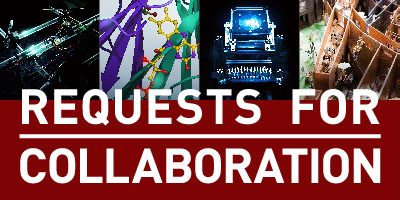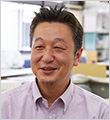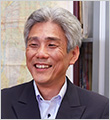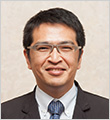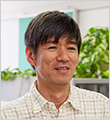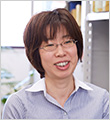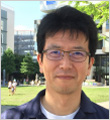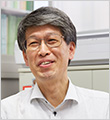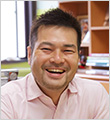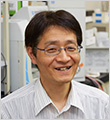In order to create a safe and secure society with a low environmental impact, in which humans live in harmony with the natural environment, and at the same time continue to develop the city’s inherent history and culture, it is important to cultivate planners and engineers who can look at things with both eyes from a global perspective.
The purpose of the Urban Design and Engineering faculty is to train professionals who can create “environmental cities”, accurately grasp the demands of society, and act independently in regards to ethics and responsibility.

Aquatic Ecosystem Engineering
To attain a comprehensive understanding of the entire ecosystem
as a complex system
The goal of our research is to describe conservation efforts and the utilization of urban coastal ecosystems. We want to maintain an ocean abundant with life, an ocean with clean water and an ocean which is familiar to all people. To achieve this goal, it is necessary to know, predict and evaluate the benefits and mechanisms of coastal ecosystems.
The thought process of understanding complex events by their simplification, and then finding essential concepts and elements is called “modeling”. This process is also important when working on environmental problems. An ecological system is a complex cross-disciplinary system where society and economy are intertwined with biology, physics and chemistry. The modeling of ecosystems, the theme of our work, includes expressing these connections (interactions) mathematically and grasping the whole system from a bird’s-eye view.
By shedding light on the goal, the gap between ideas and reality becomes visible. This is our task. Together with researchers from our university, as well as external researchers, government and private companies, we carry out our research to estimate the mechanism behind various problems, verify them with mathematical models, develop solutions and then predict and evaluate future outcomes.
The best part of this type of research is
when unexpected results lead to new discoveries
How can we suppress global warming, improve water quality including hypoxia, and protect aquatic life? For example, if we discuss how to stop global warming, our students perform simulations for various ocean areas trying to understand how and what amount of CO2 is absorbed by coastal areas. Entering all the elements and then running the mathematical model can produce unexpected results, which lead to new discoveries. That is one of the real thrills of our research.
Originally, I worked at a private company that was engaged in diverse projects related to research on the environment and in the IT field. At that time, the models created were also used as a platform for communication between industry, government, academia and experts from various fields, and new tasks and facts have been found using these new models. One of the things society desperately needs right now is the ability to find problems on its own. As a researcher, I would like to share the pleasure of finding new problems as well as the importance of defining the next goal to be aimed for through repeated discussions with students.
Urban Design and Engineering Research Area
Urban Design
Education and research in the domain of urban design focus on methods for the planning and design of urban spaces based on the comprehensive understanding of the diverse roles of cities as well as environment and phenomena which surround cities. Students can learn about methods about urban design, city planning, transportation planning, eco-friendly urban transportation, spatial information analysis and geographical information systems to create fully functional and beautiful cities through lectures and exercises in this domain.
Urban Infrastructure Planning
This research field is focused on the planning and evaluation of various urban infrastructure facilities. In recent years, we have conducted fundamental and practical research based on actual situational surveys, which focused on the development of safe and secure urban areas that can respond to new issues, such as an aging society. Global environmental problems and the support of the city inhabitants to improve the beautification of the cities in which they live.
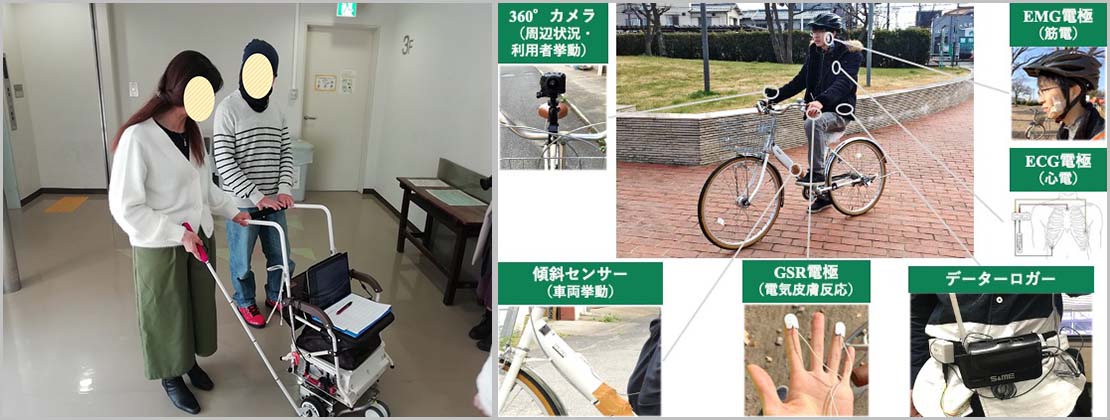
- Evaluation of traffic environments based on the visibility characteristics of bicycle users
Urban Planning and Design
The target of our research is not in the laboratory, but within the city itself. Using the relationship between people and the environment as a clue, we research correct paths to progress in regards to urban planning and design. We also engage in the field of urban revitalization and study about the state and methodology of cities that people enjoy living in.
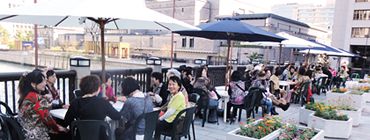
- Social experiment utilizing an open cafe on a bridge
Researchers
*Click to view researcher profiles
Urban Environment
Education and research in the domain of environmental creation is focused on correct evaluation of the current state of urban environment, the environmental impact of human activities, acquiring fundamental knowledge and engineering methods for environmental improvement in order to solve environmental problems. Through lectures, exercises and experiments students can learn about energy conservation, preventive measures in regards to heat islands, waste recycling, water and wastewater treatment, urban river eco-system rehabilitation and the improvement of oceanic environments to create sustainable, eco-friendly cities.
Regional Environmental Planning
In addition to extensive research on effective preventive measure regarding heat islands, we also consider measures to deal with the gradual increase in temperature and the effect it has on our cities. We are reviewing the results of efforts to plant roadside trees to effect the greening of cities, road sprinkling, mist scattering and more to verify the effect of such measures.
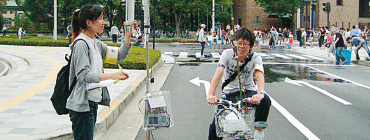
- Measurement of thermal environment during water sprinkling event (Osaka City Central Public Hall)
Aquatic Ecosystem Engineering
Our research attempts to determine, predict and evaluate the mechanisms and functions of the coastal ecosystem. In this field, we utilize diverse technologies, such as mathematical modeling, field work, environmental data analysis, and multidisciplinary perspectives from biology, physics, and chemistry. We act to clarify the relationship between the ecosystem and water quality, the fertility of living matter, the mitigation of climate change, and continue to explore ideal goals in regards to our coastal areas.
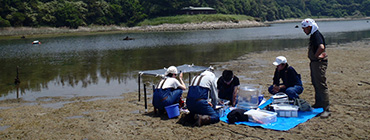
- An environmental survey at the artificial salt marsh (Osaka Nankou Bird Sanctuary) in a city
Urban Recycling Engineering
The concept of our research is to "think about the urban environment in regards to the circulation of waste, water and hazardous chemical substances". Students are conducting research on how to recover rare metals, and other useful elements, from ash and sewage sludge, searching for an efficient treatment system through cooperation between incineration plants and sewage treatment plants, and conducting research on proper management of waste and landfill sites.
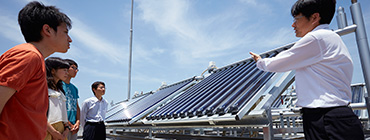
- Development of energy creating sewer systems which utilize solar heat (experimental facility located at the rooftop of the university)
Researchers
*Click to view researcher profiles
Urban Disaster Prevention
Education and research in the area of safety and disaster prevention is focused on technologies and management methods that can maintain civic life in cities, supporting the safe and peaceful lives of all of the cities inhabitants. Through lectures, exercises and experiments, students learn about increasing the service life of infrastructure facilities, technologies used for infrastructure repair and reinforcement, building beautiful bridges resistant to earthquakes, ground liquefaction, reducing the problem of groundwater, implementing port restoration technologies and responding to wide area complex city disasters in order to build disaster-resistant cities.
Structural and Concrete Engineering
Our research subjects include, “improvement of material properties” (concrete material properties), “development of design methods” (how to create disaster-resistant concrete structures) and “maintenance” (measures for inspection, repair and the long-term utilization of existing concrete structures).
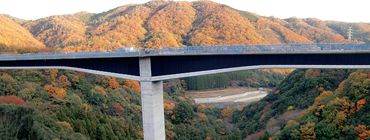
- A composite road bridge consisting of steel and concrete
Applied Structural Engineering (Bridge Engineering)
We are researching technologies required to design, construct, maintain and renovate bridges, making them beautiful, functional and safe against all possible loads, including earthquakes, yet at the same time are easy to maintain and renovate. We are working in collaboration with the Osaka municipal government carry out this goal.
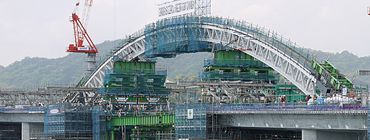
- State of a bridge under construction
Geotechnical Engineering
The goal of our research is to determine the possible amount of groundwater level reduction possible, on the premise that the settlement will remain at a minimum level, by investigating detailed ground properties in the Osaka area. At the same time, we estimate the risk of liquefaction of the sandy ground during an earthquake and clarify the effect of measures against liquefaction, by using a distribution of the current risk of liquefaction, in regards to the lowering of groundwater levels.
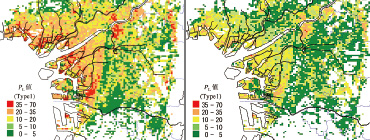
- Current groundwater level situation
- For groundwater levels which have been lowered by 3m
River and Coastal Engineering
We are researching water disasters such as tsunamis and river flooding, and complex urban disasters, including a prediction of damage when the aforementioned water disasters occur simultaneously. We are also working on renewable natural energy sources (wave power generation) and environmental problems that affect both land and marine areas.
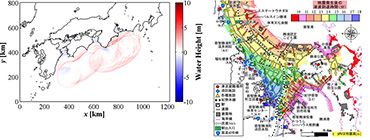
- Development of a map regarding dynamic hazards
Researchers
*Click to view researcher profiles
-
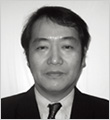
Prof.
KITOH Hiroaki -
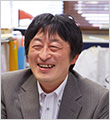
Prof.
YAMAGUCHI Takashi -
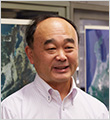
Prof.
OSHIMA Akihiko -
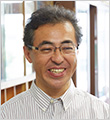
Prof.
SHIGEMATSU Takaaki -
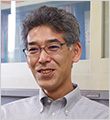
Assoc. Prof.
TSUNOKAKE Hisao -
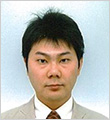
Assoc. Prof.
YAMADA Suguru -
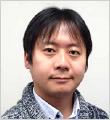
Assoc. Prof.
NAKAJO Sota -
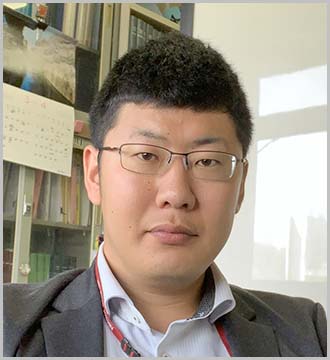
RA
HAYASHI Gen
Admission Policy
In order to create and arrive at a safe and secure society which has low environmental impact in which humans live in harmony with the natural environment and which continues to develop the city’s inherent history and culture, it is important to cultivate planners and engineers who can look at things with both eyes from a global perspective. The purpose of this faculty is to train professionals who can create “environmental cities”, accurately grasp the demands of society, and act independently on the basis of ethics and responsibility. We are therefore looking for people with the following qualities.
- Those who can understand the diversity of cities related to society, culture, and life as well as those who can look at things from various perspectives
- Those who are interested in the creation of functional and beautiful cities, that preserve both history and culture
- Those who are strongly interested in the preservation and regeneration of the environment in urban areas and wish to coexistence with nature while having a desire to contribute to the creation of autonomous cities which recycle
- Those interested in the technology and methods of management used to create cities that are resilient against disasters, and where people can live safely, securely and comfortably
- Those who are willing to carry out autonomous investigations, experiments and exercise as well as identifying and solving problems related to the environment and cities
- Those who are interested not only in the mathematical subjects necessary for the development and application of technologies, but are also interested in a global perspective, languages and the social sciences related to human behavior

